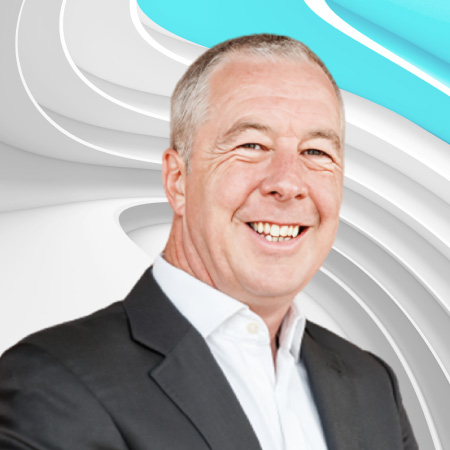Research paints a sobering picture, revealing that despite significant investments in service and customer experience, the needle on customer outcomes doesn’t seem to be moving significantly. The substantial resources poured into these areas haven’t yielded the expected results.
In this challenging scenario, two critical factors loom large – the relentless rise in customer expectations and the uncertain economic environment. In the quest for ultimate CX, Martechvibe discusses the fundamental CX challenges with the world renowned CX authority Adrian Swinscoe. Our exploration reached a critical juncture, prompting us to ask, “Where do brands go from here?”
The Challenge
“When you ask brands what their experience vision and strategy is, most people would literally list out random buzzwords such as omnichannel, digital, seamless, and AI-enabled experience. But the challenge is that if most people say that customer experience is the game and it’s the competitive differentiator, but everybody’s got the same vision, then how can people be different?” said Swinscoe. He has a very valid point. Let’s dig deeper.
People aren’t actually clear on their experience vision. They may believe they have a clear vision, but it often fails to encompass and articulate both their present situation and their desired goal. Furthermore, it may not adequately address the desired outcomes from the three major perspectives – customers, employees, and the business itself.
What now?
For a brand’s CX vision to be effective, it must sensibly align with corporate objectives and business outcomes. It means they need to have a granular approach to what their business requires.
Questions to ask
- What is your CX vision and strategy?
- Does your vision describe where you are and where you want to be?
- Does it take into account the different perspectives: customer, employee, business?
What can you do in order to support the achievement? - How does it support the achievement of your business objectives?
One of the things that plagues customer experience initiatives is not being able to deliver demonstrable return on ROI. “If you’re not delivering justifiable ROI, you’re gonna get shut down. CFOs are not interested in correlations, they want to know how you are going to invest and how it will drive business outcomes.”
The CFO’s Five Questions For CX Investment
- Will it generate customer interest?
- Will it improve the conversion rate?
- How much will the customer spend in a particular transaction?
- How often will they spend it?
- What is the cost of service to generate profitability?
“If your initiatives aren’t aligned with one or more of these five factors, you’re gonna find it really hard to prove your investment needs and probable outcomes,” says Swinscoe.
Don’t be too dependent on metrics alone.
People in the service and experience space have to challenge themselves to not think about changing metrics. “Metrics are measures of progress and not the outcomes. Your ROI, whether it’s interest, conversion rate, spend, repeat spend or cost to serve, these are the outcomes that you want. ’cause they drive your revenue, your customer numbers, your revenue numbers, your profitability. If you can’t align to the five factors, then you need to move away from correlation to causation. And that’s where many people in the, in the, the experience sort of space, they fall down. They are not building good enough business cases. They’re not challenging themselves to actually go and do this.”
Adrian wants teams to dig deep and get a more granular perspective.
More questions to ask:
- What is the human touch and technology balance in the whole space?
- Where is it now?
- Where would you like it to be? And why?
- Will it change for different types of customers?
- Will it change depending on the stage of their journey?
“Some people just buy technology because it makes sense. They’re like, oh, I’ll do that because it’s the flavour of the month! For instance, when chatbots first entered the market. Companies invested in them without so much as a thought about business outcome alignment. Unsurprisingly, most chatbots didn’t deliver.”
Meanwhile,
CFOs are keen on investing in service experiences that boost revenue, but they also seek investments that enhance productivity, performance, and reduce service costs. Those working in the customer experience space should consider how to establish greater relevance across the entire business landscape.
There are some brands who are actually getting out of having a customer experience team because they want their other departments to think of customer experience. “There are brands that don’t do it at all specifically because it’s hardwired into what they do. So the best companies, the best brands don’t talk about customer experience because it’s hardwired into what they do and how they do it.”
Swinscoe suggests that there’s a model with a higher likelihood of succeeding—the hub-and-spoke model. In this model, customer experience serves as a centre of excellence positioned at the core of the business. “And it’s a game of engagement and influence but also relevance. Customer experience is not another business unit but an integrated hub. It can be hard to succeed, but I’ve seen people have the most success at it as it is also cost effective.
The more granular you are with your thoughts, questions and strategies, you start to build a much clearer idea of what you want to do and how you are going to do it. According to Forrester, it is anticipated that approximately one-third of organisations will effectively master the integration of customer experience and business performance by next year. These organisations will heavily invest in this area as they recognise it as a significant source of differentiation and competitive advantage. Let’s hope they take the granular approach.











































































































